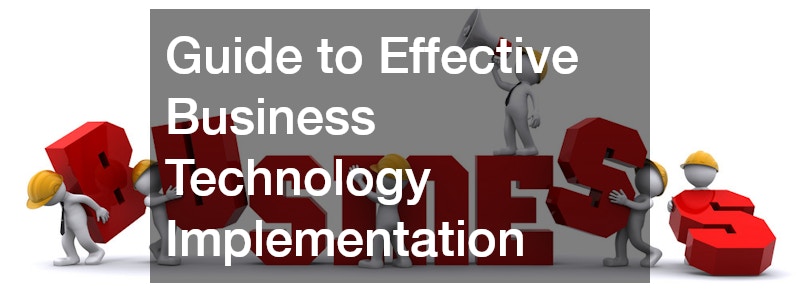A business technology solution is a powerful tool that can transform a company, enabling it to enhance efficiency, streamline operations, and serve clients more effectively. For such solutions to achieve their intended impact, they must be carefully chosen and integrated. Well-implemented technology solutions align with a business’s objectives, address specific operational needs, and support growth with minimal disruptions. Each solution has a unique role in optimising operations, whether it’s enhancing internal communication, updating systems, or improving data security.
A successful implementation process involves assessing existing workflows, identifying challenges unique to the business, and preparing teams to adopt new tools. It also requires ongoing evaluation and support to ensure the technology aligns with evolving needs. By strategically implementing technology solutions, businesses can boost productivity, remain competitive, and future-proof their operations.
Understanding Your Business Needs
Before implementing a technology solution, it’s crucial to understand your business’s specific requirements. Every organisation has unique goals, workflows, and challenges that determine which technologies will be most effective. A thorough needs assessment helps pinpoint areas where technology can deliver the greatest benefits, whether through improved efficiency, better communication, or enhanced customer service. Clearly defining your business goals ensures you choose a technology solution that minimises costs while maximising benefits.
For instance, a company specialising in hot water system installations might need to improve its scheduling and field communication. Implementing a scheduling app with GPS tracking could streamline technician assignments, improve response times, and boost customer satisfaction. By identifying such needs, businesses can harness technology to enhance service delivery and meet their specific operational objectives.
Assessing Technology Options
Once a business has identified its needs, the next step is to evaluate available technology options. This involves researching providers, comparing features, and assessing each option’s scalability. Factors such as ease of use, compatibility with existing systems, and flexibility are critical considerations. Choosing a solution that can adapt to future requirements ensures long-term viability. Through a thorough evaluation, businesses can select technologies that align with their operational models and long-term goals.
For example, a creative agency might focus on technologies that enhance collaboration and project management. Investing in tools with features such as task assignment, client communication, and file sharing can streamline workflows. By selecting technology tailored to their needs, creative agencies can better manage client expectations and maintain high service standards.
Planning for Growth and Scalability
Scalability is a critical consideration when selecting technology for your business. As businesses grow and their needs evolve, solutions that cannot scale may become obsolete or inefficient. It’s essential to determine whether a technology can accommodate future expansion, such as increased data storage or additional users. Scalable solutions enable businesses to adapt and grow without frequent, costly upgrades, making them a sound long-term investment.
For example, roofing companies often experience seasonal fluctuations in demand and significant growth when entering new markets. Scalable project management software can help these companies handle more projects and streamline operations during peak seasons. By implementing a solution designed for growth, roofing companies can effectively respond to increased demand while maintaining high service standards.
Ensuring Data Security and Privacy

Data security and privacy are paramount when implementing any business technology solution. Companies manage sensitive information, such as customer details and financial records, which must be safeguarded against unauthorised access. Evaluating technology solutions for robust security protocols—such as encryption, multi-factor authentication, and compliance with privacy regulations—is essential. Secure technology solutions protect organisational data while fostering customer trust by demonstrating a commitment to handling their information responsibly.
For example, countertop installation businesses store client design preferences and project data electronically. A customer relationship management (CRM) system with robust encryption and secure storage ensures this data is protected. Implementing a secure technology solution allows businesses to operate confidently, knowing they are safeguarding sensitive information and maintaining client trust.
Training Employees for Maximum Utilisation

Employee training is vital for the successful implementation of a business technology solution. Even the most advanced tools can fail to deliver optimal results if employees are unsure how to use them effectively. Comprehensive training programs that include hands-on practice, clear guidance, and ongoing support can build employee confidence and competence with the new technology. Ensuring that staff understand the solution’s features and benefits maximises its impact on organisational efficiency.
For example, a new phone system for business, if implemented without proper training, can result in confusion and inefficiencies. Employees may struggle with the system, causing delays in communication and customer service. By investing in training, companies can ensure their employees are well-equipped to use the phone system effectively, facilitating seamless internal and external communication. Properly trained staff can transform technology solutions into powerful tools for improving productivity and service delivery.
Integrating New Solutions with Existing Systems
To maximise efficiency and ensure a smooth transition, new technology solutions must integrate seamlessly with existing business systems. Adding new technology without considering its interaction with current software, databases, or tools can create operational disruptions. Successful integration requires evaluating how new solutions interact with existing systems to ensure data flows seamlessly. Prioritising compatibility and synchronisation reduces manual tasks, avoids redundancy, and creates a cohesive ecosystem.
For example, a local removals company might adopt a CRM tool to manage client inquiries and bookings. For the tool to be effective, it must integrate with the company’s existing scheduling and billing software. This integration enables the removals company to manage all aspects of customer service through a single interface, reducing administrative work and improving the customer experience. Integrated technology solutions streamline operations across platforms, allowing businesses to run more efficiently.
Establishing Clear Implementation Goals
Clear implementation goals are essential for maximising the benefits of business technology solutions. By setting specific, measurable objectives, businesses can evaluate the solution’s impact and ensure it aligns with broader organisational goals. Examples of implementation goals include improving customer satisfaction, reducing operational costs, or enhancing team collaboration. Defined goals enable businesses to track progress and make necessary adjustments to optimise the solution’s effectiveness.
For instance, a trades business might aim to reduce scheduling errors by implementing job scheduling software. This goal provides a clear benchmark for assessing the software’s success. It also simplifies the evaluation process and highlights areas for improvement. By establishing clear goals, businesses ensure their technology solutions support overall objectives, providing a roadmap for continuous improvement.
Measuring Success
Measuring and analysing the success of technology solutions is crucial for understanding their effectiveness and return on investment. By tracking key metrics such as performance, efficiency, and user satisfaction, businesses can assess whether the technology is meeting its objectives. Regular analysis allows companies to identify areas for adjustment, ensuring the solution delivers maximum value. A feedback loop of continuous improvement keeps the technology aligned with organisational goals.
For instance, a pest control company might monitor response times and customer satisfaction scores after adopting a customer support platform. Comparing these metrics to pre-implementation data reveals whether the solution has improved efficiency and client experiences. This data-driven approach provides valuable insights for future technology investments or upgrades.
Managing Change and Gaining Employee Buy-In
Change management plays a vital role in the successful implementation of new technology solutions. Employees may feel uncertain or resistant to new tools, especially if they disrupt established routines. Actively involving employees in the transition and clearly communicating the benefits of the technology fosters a supportive culture. Encouraging feedback and addressing concerns increases buy-in, making the implementation process more effective.
For example, when introducing project management software for coordinating teams and tracking progress, it’s crucial to highlight how the technology simplifies processes and improves productivity. By demonstrating its benefits and involving employees in the transition, businesses can turn potential resistance into enthusiastic adoption.
Providing Ongoing Maintenance and Support
Ongoing maintenance and support are critical for sustaining the success of a business technology solution. Regular software updates and access to technical support ensure the technology continues to perform optimally and securely. Maintenance addresses potential issues proactively, while support helps employees maximise the solution’s capabilities. By prioritising these elements, businesses can extend the life of their technology investments.
For instance, a plumbing company that implements scheduling and invoicing software must ensure the system receives regular updates and support. These services enable the company to resolve technical issues quickly, minimising downtime and operational disruptions. Well-maintained technology allows businesses to focus on delivering quality services without technical hindrances.
Conclusion
Implementing business technology solutions requires careful planning, a clear vision, and a commitment to ongoing improvement. From understanding business needs to managing change and ensuring data security, every step is essential for maximising the impact of technology. By taking a strategic approach to technology integration, businesses can achieve meaningful improvements in efficiency, productivity, and service quality.
Each business has unique operational needs, goals, and challenges. Selecting tailored technology solutions ensures they integrate seamlessly with existing workflows, adapt to growth, and remain effective over time. Setting measurable goals and regularly evaluating results enable businesses to refine their solutions, maximising return on investment.
Technology implementation is not a one-time event but an ongoing process of growth, innovation, and adaptability. As industries and technologies evolve, proactive refinement ensures solutions remain relevant and effective, positioning businesses to thrive in a dynamic marketplace.
